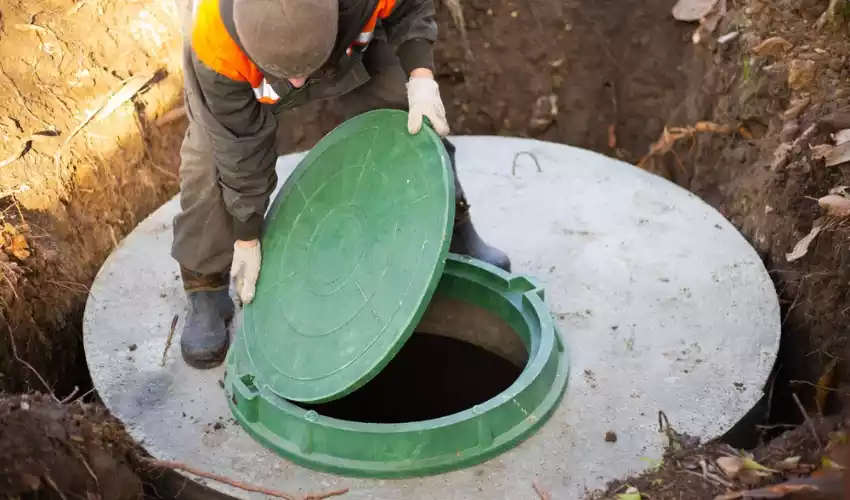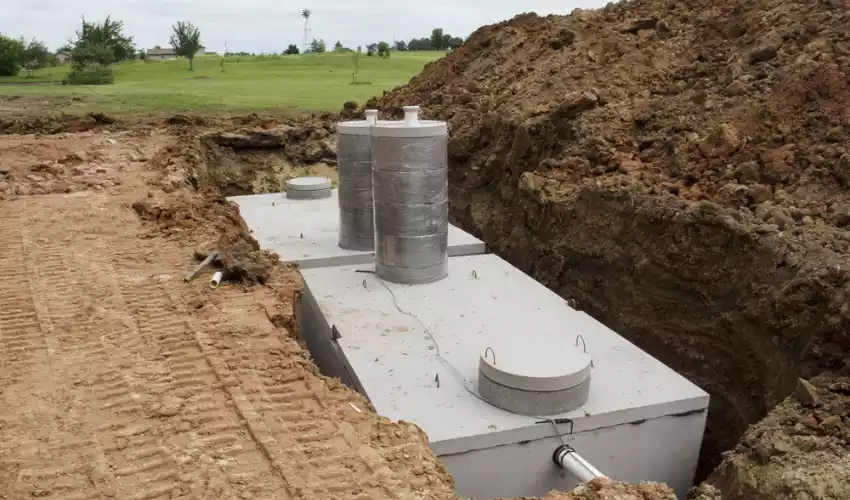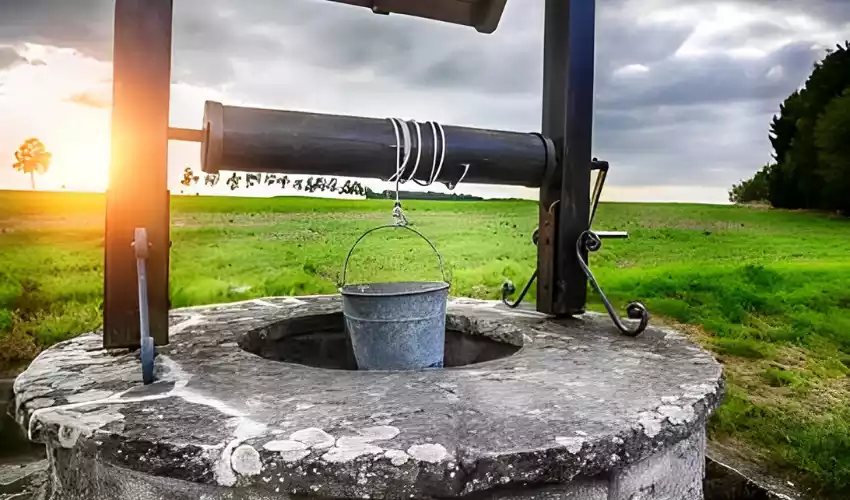Septic systems and water wells are crucial to modern residential life, especially in rural or suburban settings. However, the interaction between these systems can sometimes lead to unforeseen complications. Among these, the risk of septic contamination spreading to a water well is a grave concern.
Yes, a septic tank can contaminate a water well. This usually occurs when the systems are installed too closely or if there is a failure in the septic system. The contamination can lead to serious health hazards and negatively impact the surrounding environment.
Analyzing this problem involves a comprehensive look at the mechanisms through which septic systems operate, how groundwater flows, and how wells are vulnerable to contamination. It requires understanding the signs of contamination, the steps to prevent it, and the consequences of neglecting such a crucial issue.
The Proximity Factor
Critical Distance Between Septic Tanks and Water Wells
Preventing contamination starts with ensuring a safe distance between the water well and the septic system. While each state may have different regulations, the universally recommended minimum distance is 50 feet. This distance allows enough soil to act as a natural filter, removing harmful bacteria and viruses before they reach the well.
But why 50 feet? The reason lies in how groundwater moves and how contaminants are filtered in the soil. As water moves through the ground, bacteria, viruses, and other pathogens are strained out, effectively cleaned by the soil. Fifty feet provides enough buffer for this cleaning process to take place. It’s a critical number, not just a guideline, and failure to maintain this distance significantly increases the risk of contamination.

Topographical Considerations
Apart from the distance, the geographical layout of the land plays a considerable role in the potential contamination of a water well by a septic tank. Slope and soil type are the main factors to consider in this scenario.
If your property is on a steep slope, there’s a higher risk for contamination, particularly if the well is downhill from the septic tank. Groundwater flows along the direction of the slope, carrying potential contaminants with it. It’s critical to consider this when placing your well and septic system.
Soil type is another significant factor. Sandy or gravel soils are highly permeable, which means water — and any potential contaminants — can travel through them more quickly. This rapid movement gives less time for the soil to naturally filter out the contaminants. Conversely, clay soils are less permeable and offer better natural filtration but can lead to other issues with septic system operation.
How Contamination Happens
Septic System Failure
One of the primary ways that well water gets contaminated by septic systems is through system failure. Over time, a septic tank can develop problems due to various reasons — a buildup of solid waste, poor construction, physical damage, etc.
A septic system failure doesn’t just mean a total breakdown or collapse. Even small leaks or overflows can lead to contamination. When a system isn’t working as it should, untreated or partially treated wastewater can escape into the surrounding soil. Once in the soil, bacteria and viruses from the wastewater can travel through the ground and into a well, contaminating the water supply.
Groundwater Flow and Contamination Pathways
Understanding groundwater flow is crucial to understanding how contamination can occur. Groundwater generally flows from high points to low points, similar to the way water runs down a hill. This movement means that if a septic system is at a higher elevation than a well, contaminants can flow downward and seep into the well water.
Also, rain can wash contaminants into the groundwater. During heavy rain, the ground can become saturated, reducing its ability to filter out contaminants as effectively. In this case, the contaminants can spread further than they would in normal conditions.
Well Vulnerability and Contaminant Concentration
The condition and construction of the well itself also play a role in its susceptibility to contamination. Older wells or those with cracks in their structure may be more vulnerable as these defects can allow contaminants to bypass the natural filtering process of the soil.
The concentration of contaminants from the septic system is another crucial aspect to consider. A small amount of bacteria might be effectively filtered out by the soil. However, a large amount (such as might be found with a septic system failure) can overwhelm the soil’s filtering capability, leading to contamination.

Recognizing Contamination
Water Quality Indicators
Changes in the quality of well water can indicate possible contamination from a septic system. These changes might be noticeable in the color, smell, or taste of the water.
For example, water that turns cloudy or develops an unusual color might be contaminated. An odd smell, often described as “rotten eggs” or a strong chemical scent, could also suggest a problem. Finally, an unexpected change in taste, particularly a metallic or salty taste, could also be a sign of contamination.
Moreover, routine water tests that show an increase in bacteria or nitrate levels can be warning signs. It’s advisable to conduct regular water tests, especially if you have a septic system near your water well.
Symptoms of Septic Contamination
Apart from water quality indicators, physical signs on your property can also suggest septic contamination. If the grass near your septic tank is noticeably greener and lusher than the rest of your lawn, it could be a sign that wastewater is leaching into the surface soil.
Stagnant water or wet spots in your yard, particularly with a foul odor, could also indicate a leak or overflow from your septic system. In such cases, the contaminants can potentially reach your well, particularly if these symptoms are downhill from your water source.
Preventive Measures
Proper Septic System Design and Installation
Preventing well water contamination begins with the correct design and installation of the septic system. This process starts with a thorough examination of the site, including the type of soil, the slope of the land, and the location of the existing well.
The septic tank should be placed in a location where the groundwater flow won’t lead directly to the well. It should also consider the type of soil present and the slope of the land for efficient wastewater treatment.
Regular Maintenance and Inspection
A well-maintained septic system is less likely to fail and, therefore, less likely to contaminate a nearby well. Regular inspection and pumping of the septic tank can help identify and fix problems before they lead to system failure.
Inspecting a septic system involves checking for leaks, examining the scum and sludge layers in the tank, and ensuring the drain field is absorbing the wastewater properly. It’s advisable to have your septic system inspected by a professional every 3-5 years, depending on usage and the system’s size.
Advanced Wastewater Treatment Options
Advanced septic systems can provide an additional layer of protection against well contamination. These systems offer enhanced treatment of the wastewater before it’s dispersed into the soil. The treatment processes reduce the amount of harmful bacteria and viruses in the wastewater, making it safer if it does reach the groundwater.
These systems can be especially beneficial in areas with high water tables, small lots, or in environmentally sensitive areas where traditional septic systems may pose a risk.

Repercussions of Ignorance
Health Risks
When well water gets contaminated, it poses a significant risk to the health of anyone consuming it. Contaminated water can cause a host of illnesses, particularly gastrointestinal diseases like diarrhea, vomiting, and nausea.
Moreover, some types of bacteria and viruses that can be present in contaminated water are known to cause more severe diseases, including Hepatitis A, dysentery, and even cholera. Especially vulnerable are young children, the elderly, and people with weakened immune systems.
Environmental Impact
Septic contamination doesn’t just impact human health. It can also have severe effects on the local environment. When contaminants leach into the soil and groundwater, they can disrupt the natural ecosystem.
Contaminated groundwater can flow into nearby streams, ponds, or other water bodies, affecting the local aquatic life. Excessive nutrients from the wastewater can cause algae blooms that deplete the water’s oxygen level, killing fish and other aquatic organisms.
Moreover, the contaminated water can harm terrestrial wildlife that relies on these water sources. It can also disrupt the balance of nutrients in the soil, affecting the health of plants and trees.
Regulations and Guidelines
EPA and State-specific Rules
EPA provides guidelines for septic system installation and maintenance. However, most rules and regulations are state-specific and should be followed for proper functioning.
Importance of Adherence
Non-adherence to these guidelines not only poses a health risk but can also lead to legal consequences.
Frequently Asked Questions
How often should a septic tank be inspected?
Regular inspection every 3-5 years by a professional is advisable for preventing septic system failure.
Can boiling contaminated water make it safe to drink?
Boiling can kill most types of disease-causing organisms, but it does not remove chemicals, salts, and other inorganic matter.
What are the signs of a failing septic system?
Signs include slow draining toilets and sinks, foul odors, lush patches of grass near the septic tank, and standing water in the yard.
Conclusion
Septic tanks and water wells are two common features of many households, particularly in rural areas. However, an unseen link between these two can pose significant health and environmental risks.
The contamination of water wells from septic systems is a serious issue, though it can be managed with proper distance maintenance, regular system inspection, and following local regulations. Advanced wastewater treatment options can also add an extra layer of security.
The key is awareness and swift action. The risks posed by septic contamination are too significant to ignore. With a proactive approach, the chances of a septic tank contaminating a water well can be significantly reduced.